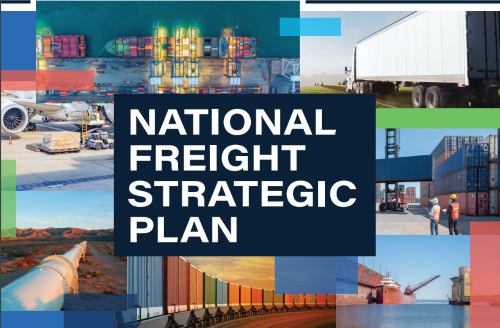The U.S. Department of Transportation unveiled a 118-page National Freight Strategic Plan or NFSP on September 3 that “establishes a clear vision for the future of the country’s freight system,” according to USDOT Secretary Elaine Chao.
“This plan will help us maintain America’s competitive edge across industries such as agriculture, manufacturing, and e-commerce,” she said in prepared remarks during a virtual unveiling of the plan. “Our freight system is what drives the nation’s economic growth and it touches the lives of every American.”
Sec. Chao noted that America’s transportation network moves on a daily basis more than 51 million tons of freight and energy products valued at nearly $52 billion via highways, railways, ports and inland waterways, pipelines, and airports.
She pointed out that recent increases in freight demand driven by the growth of e-commerce and global supply chains is “straining our freight system and could threaten the competitive advantage of American businesses.”
[Video of the entire virtual NFSP rollout event is below.]
Joel Szabat, USDOT’s acting under secretary for policy, noted during the event that the agency hosted 13 events and received 82 formal comments regarding the NFSP.
“The current freight systems faces significant challenges, including resiliency challenges from events such as Hurricane Laura which recently struck Texas and Louisiana,” he said in prepared remarks.

“COVID-19 is also driving long-term changes in how Americans travel and do business – and we don’t yet know what this ‘new normal’ will look like,” Szabat noted. “We do see key trends and concerns developing. E-commerce is a major trend and it is increasing demand for air cargo, residential deliveries and reverse logistics. We are also seeing how the inefficiency of major freight corridors is affecting the overall efficiency of the nation’s freight system.”
He added that the NFSP also aims to help guide “prioritization” of freight funding at the state level as well as address the local community impact of freight planning, such as increases in traffic, noise, and air pollution.

Patrick McKenna, director of the Missouri Department of Transportation and the American Association of State Highway and Transportation Officials 2019-2020 president, echoed that perspective in his prepared remarks.
“Here in Missouri, our multimodal freight system is an essential part of our state’s economy,” he explained. “Freight is key to Missouri’s prosperity because freight is the economy in motion.”
McKenna noted that the NFSP will lay out a “road map” state departments of transportation can use to prepare for the future development of freight data resources and workforce needs. “It will serve as a vital resource to help us move freight transportation networks into the 21st century,” he said.
 Nation
Nation
AAA: Pedestrian Safety Systems for Vehicles Improving
October 17, 2025 Nation
Nation

